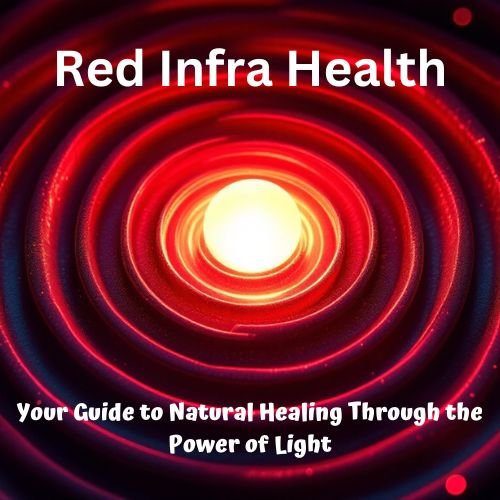For ideal bone treatment using NIR light therapy, you'll want to focus on wavelengths between 780-1000 nm, with 810-850 nm being most effective for deep tissue penetration. You should aim for treatment sessions lasting 10-20 minutes, delivering total doses between 1-45 J/cm² (minimum 4 J/cm² for therapeutic effect). For chronic conditions, apply treatments 3-5 times weekly, while acute conditions may benefit from daily sessions. Keep power exposure between 1-500 mW/cm² and tissue temperature below 43°C (109.4°F) for safety. Understanding additional factors like tissue depth and composition can substantially enhance your treatment's effectiveness.
NIR Wavelength Selection for Bones

Near-infrared (NIR) wavelength selection zeroes in on specific ranges that prove most effective for bone analysis. You'll find that the 950-1650 nm range excels at bone identification, while the 650-950 nm range strongly correlates with subchondral bone properties. The signal magnitude in bone tissue is typically smaller than muscle when measuring hemodynamic changes.
For thorough bone biomechanical analysis, you'll want to focus on the 750-1900 nm range.
When you're examining bone composition and diagenesis, pay attention to the specific wavelengths of 982 nm, 1186 nm, and 1400 nm. You'll notice that different wavelengths highlight various chemical bonds, with 1007 nm, 1180 nm, and 1447 nm being particularly important for carbonated hydroxyapatite matrix analysis.
Don't bother with wavelengths beyond 1900 nm, as they're less effective due to high water absorption.
To optimize your wavelength selection, you can employ various methods like FIC-SS, Monte Carlo uninformative variable elimination, or successive projection algorithm. You'll find that PCA and PLS-DA work effectively for bone classification, while ELM models can boost your prediction accuracy.
For correlating NIR data with micro-CT results, partial least squares regression proves particularly useful.
Deep Tissue Penetration Factors
A tissue's composition plays a critical role in determining NIR light penetration depth. You'll find that water content substantially affects absorption, especially at wavelengths above 950 nm, while hemoglobin strongly absorbs light below 700 nm. The presence of collagen, particularly in bone tissues, becomes essential at 2100 and 2350 nm. The application of NIR light shows high biocompatibility with minimal toxicity to surrounding healthy tissues.
| Factor | Impact on Penetration |
|---|---|
| Water Content | Limits penetration >950 nm |
| Hemoglobin | Restricts penetration <700 nm |
| Tissue Structure | Thin epidermis allows deeper reach |
You'll achieve maximum penetration in the NIR range between 700-1300 nm, with 810 nm penetrating deeper through skull and scalp compared to 660 nm. When you're examining specific tissues, you'll notice varying penetration depths: 7.5 mm at 705 nm, 6.3 mm at 633 nm, and only 1.0 mm at 408 nm.
For bone analysis, you'll want to focus on areas with high fat-to-muscle ratios, such as the thigh, upper arm, and chest. Remember that scattering decreases as wavelength increases, and tissue heterogeneities will affect your NIR light propagation. Under ideal conditions, you can achieve penetration depths of several centimeters.
Bone Density Treatment Protocols

You'll find that NIR-based bone density assessments offer a radiation-free alternative to traditional scanning methods, making them ideal for long-term monitoring.
Your treatment strategy should focus on targeted NIR applications using wavelengths between 810-850 nm, which have shown superior results for bone regeneration. The therapy works by helping to restore balance between bone formation and resorption, which is crucial for maintaining healthy bone density.
You can track your progress through regular density measurements every 3-4 months, adjusting the treatment protocol based on your response to the therapy.
Radiation-Free Density Assessment
Throughout recent years, radiation-free bone density assessment has emerged as a groundbreaking alternative to traditional diagnostic methods. REMS technology, which uses ultrasound waves instead of ionizing radiation, stands out as a particularly promising advancement in bone density measurement.
When you're evaluating bone density assessment options, you'll appreciate that REMS offers several key advantages. You can use it for frequent monitoring without radiation exposure concerns, and it's especially suitable if you're pregnant, pediatric, or at risk for secondary osteoporosis.
You'll also benefit from its portability, making it ideal for home care or hospital settings.
You should know that while DEXA remains the gold standard, REMS provides comparable accuracy while eliminating radiation risks. You can get measurements from axial anatomical sites like your spine and femur, just as you'd with traditional methods.
If you're managing conditions requiring regular bone density monitoring, you'll find REMS particularly valuable due to its non-invasive nature and safety profile.
When choosing between assessment methods, you'll need to evaluate your specific health status and risk factors. Your healthcare provider can help determine if REMS is the right choice for your situation.
Targeted Treatment Strategies
Building on radiation-free assessment methods, modern treatment protocols offer targeted approaches for managing bone density concerns. You'll find that bisphosphonates serve as the primary first-line therapy, requiring oral administration for up to five years or intravenous delivery for up to three years. When you're taking these medications, you'll need to stay upright for at least 30 minutes after consumption with a full glass of water.
| Treatment Type | Duration | Key Considerations |
|---|---|---|
| Bisphosphonates | 3-5 years | Must remain upright 30 min after dose |
| Denosumab | Every 6 months | Alternative for those who can't take bisphosphonates |
| Teriparatide/Abaloparatide | Up to 2 years | Dramatic improvement but higher risk |
For high-risk cases, you might benefit from sequential therapy, starting with romosozumab followed by alendronate, which proves more effective than using alendronate alone. Your treatment plan should be personalized based on your specific risk factors, age, and baseline bone density. Regular monitoring becomes essential to track your progress and adjust treatments as needed. You'll need ongoing assessments to determine when to modify or switch therapies for the best results.
Long-Term Monitoring Protocols
Long-term monitoring of bone density requires a systematic approach that begins with baseline BMD testing for at-risk individuals, including women over 65 and men over 70. You'll need to use DXA scans, as they're the standard for bone mass measurement and the only technology Medicare recognizes for monitoring osteoporosis treatment.
Your monitoring frequency should align with these evidence-based protocols:
- Schedule repeat BMD measurements every 1-2 years after starting therapy, with precision errors ranging from 0.5% to 3%.
- Extend testing intervals to 3-5 years if you've previously tested normal and maintain stable risk factors.
- Consider more frequent monitoring if you're taking specific medications like glucocorticoids (>5mg prednisone daily for >3 months) or aromatase inhibitors.
- Adjust your testing schedule based on your FRAX scores and individual risk assessment.
During treatment, you'll typically follow bisphosphonate therapy for up to 5 years orally or 3 years intravenously. If you're at very high risk for fractures, your doctor might recommend sequential therapy, such as romosozumab followed by alendronate.
Remember that stable findings may allow for reduced testing frequency over time.
Exposure Duration Guidelines
The exposure time framework for NIR bone therapy reveals substantial variations in recommended durations, ranging from 33.3 minutes to over 9 hours depending on fluence requirements.
When you're planning treatment protocols, remember that approximately 50% of 750 nm or 940 nm infrared light penetrates just 1 mm of human skin, and a mere 1.9 mm of skin tissue can block detectable photonic energy. You'll want to account for bone's lower scattering coefficient compared to skin, though this doesn't automatically translate to better penetration.
You should adjust your exposure duration based on multiple factors including tissue depth, power density, and treatment frequency. While clinical benefits have been observed with shorter, minutes-long exposures, there's no universal protocol that fits all scenarios.
You'll need to tailor your approach taking into consideration the specific condition, anatomical location, and tissue composition. For accurate monitoring, take into account that adipose tissue thickness can markedly impact your NIRS measurements, and device limitations may affect your data collection precision.
NIR Safety Parameters

When you're working with NIR therapy for bones, you'll need to follow strict power exposure limits that typically range between 1-500 mW/cm², depending on the specific wavelength and application.
You must monitor tissue temperature to keep it below 43°C (109.4°F) to prevent thermal damage while ensuring therapeutic effectiveness.
The duration of exposure should be carefully matched to your chosen wavelength using a safety matrix, with longer wavelengths (800-1000nm) generally allowing for extended treatment times compared to shorter ones.
Maximum Power Exposure Limits
Safety parameters for NIR exposure encompass strict maximum power limits across a broad wavelength range of 180 nm to 1,000 μm. You'll need to carefully monitor exposure durations between 100 femtoseconds and approximately 8 hours (30 kiloseconds) to maintain safety standards.
The ANSI z136.1 standard provides detailed exposure limit tables that you'll need to consult for specific wavelength and duration combinations.
When calculating Maximum Power Exposure (MPE) limits, you must consider both thermal and photochemical injury risks to eyes and skin. The damage thresholds for skin and cornea are often comparable within certain wavelength ranges, making it essential to stay within established safety parameters.
- Calculate your MPE based on specific wavelength requirements and exposure duration
- Monitor both irradiance and radiant exposure levels continuously
- Adjust your calculations based on spot size for thermal injury prevention
- Apply appropriate spectral correction factors for photochemical injury risks
You'll find these safety parameters particularly important when using NIR for bone imaging, where the NIR-II region (1000-1700 nm) offers superior tissue penetration. Remember that exceeding these limits can lead to adverse biological effects, even in deep-tissue applications.
Tissue Temperature Thresholds
Monitoring tissue temperature thresholds precisely defines your safety boundaries when working with NIR exposure. You'll need to guarantee tissue temperatures don't exceed 41°C, as this is the critical threshold where potential harm begins.
When you're conducting localized exposures, you should consider a 30-minute averaging time rather than the standard 6-minute window.
You'll want to track both absolute temperature and temperature changes, though absolute temperature proves more vital for preventing thermal damage. A 2°C or 5°C increase serves as your warning threshold, helping you maintain tissue temperatures below the critical 41°C mark.
If you're working with sensitive tissues or monitoring fetal exposure, note that even a 1.5°C continuous elevation requires careful monitoring.
When you're controlling exposure times, you must account for the tissue's thermal relaxation time, particularly with laser applications. If your exposure duration exceeds the thermal relaxation time, heat will diffuse beyond the typical penetration depth.
You should maintain power densities below 100 mW/cm², as this level can trigger substantial tissue heating. Remember that pre-exposure temperatures greatly impact potential injury risks, so you'll need to factor these into your safety calculations.
Duration-Wavelength Safety Matrix
Through careful mapping of NIR exposure parameters, you'll need to navigate a complex interplay between duration and wavelength specifications.
When working with NIR for bone imaging, you'll find that exposure times fall into two distinct categories: short-term (0.01ms to 10s) and long-term (beyond 10s). For extended exposures, you'll need to pay special attention to the fixed limits, as your visual aversion response won't protect you in the NIR range.
The wavelength selection between 780nm and 1400nm requires particular attention to safety thresholds, as these ranges interact differently with biological tissues. You'll need to factor in both the burn hazard weighing function and the angular subtense of your NIR source to guarantee safe operation.
- Short exposures (≤10s): You must calculate limits based on the specific duration and wavelength combination
- Long exposures (>10s): You'll work with fixed limits, considering the cumulative effects
- Radiance calculations: You need to incorporate both spectral radiance (Lλ) and burn hazard weighting
- Angular considerations: Your source's effective angular subtense (αeff) must align with exposure duration limits
Targeting Specific Bone Areas
Targeting specific bone regions with NIR probes has become increasingly precise thanks to advanced conjugation techniques and improved fluorophore designs. You'll find that pamidronate (PAM) conjugation offers high binding affinity to hydroxyapatite (HA) in bones, making it an effective targeting moiety for your imaging needs.
When you're selecting NIR probes for bone imaging, you'll want to focus on the NIR-II region (1000-1700 nm), as it provides superior imaging quality and deeper penetration compared to NIR-I.
You can detect tumors less than 1 mm in diameter using NIR-II fluorescent dyes like CH1055-PEG-Affibody, and you'll achieve markedly higher signal-to-background ratios.
To enhance your bone targeting, you'll need to take into account the physicochemical properties of your conjugated fluorophores, including their charge and hydrophobicity. You can improve your imaging results by using zwitterionic fluorophores, which enhance signal-to-background ratio in both bone and cartilage tissues.
Remember to target areas with thin epidermis and minimal vascular tissue, as these conditions allow for ideal NIR penetration and clearer imaging results.
Measuring Treatment Effectiveness

The effectiveness of NIR bone treatments can be accurately measured using multiple complementary methods. You'll need to monitor key metrics including bone viability, tumor size reduction, and oxygen levels through specialized techniques like bioluminescence studies and near-infrared spectroscopy (NIRS). NIRS proves particularly valuable as it lets you evaluate oxygen levels, blood flow, and metabolism in bone tissue while measuring recovery time after ischemia.
When evaluating treatment success, you'll want to focus on these vital parameters:
- Power density and total dosage measurements to secure efficient energy delivery to the target area
- Penetration depth verification using NIR-II fluorescent dyes, which offer superior imaging contrast
- Treatment frequency and duration monitoring through standardized protocols
- Post-occlusive reactive hyperemia assessment for microvascular function
You can enhance your evaluation by using bone-targeting probes that improve the signal-to-background ratio in imaging. NIR-PIT effectiveness can be confirmed through in vivo models, showing significant reductions in tumor viability.
While measuring treatment success, it's essential to consider both pulsing and continuous wave modes, as they may affect bone health differently.
Clinical Applications and Results
Near-infrared spectroscopy has demonstrated remarkable success in clinical bone health applications. You'll find its versatility particularly evident in evaluating oxygen levels, blood flow, and metabolism in skeletal muscle and bone tissue.
When you're evaluating tibia hemodynamics, NIRS can effectively measure re-oxygenation rates after ischemia and monitor changes during resistance exercise.
You can use NIRS to characterize bone tissue properties and improve arthroscopic surgery standards, especially for osteoarthritis patients. The technology's proven particularly valuable in monitoring fracture healing, where you'll observe distinct patterns in O2Hb and HHb parameters that can help you identify potential nonunion cases early.
Using devices like PortaMon, you'll be able to measure oxygenation changes in small vessels and myoglobin. However, you'll need to think about placement carefully, as soft tissue thickness affects measurements.
While NIRS has limited penetration depth, you can overcome this by integrating it into smart implants or wearables. You'll find its most effective applications in superficial bone sites, though future developments may expand these capabilities through optimized device design and placement strategies.
Optimizing Treatment Sessions

Successful NIR treatment sessions for bones require careful attention to wavelength selection and exposure protocols. You'll find the most effective wavelength range falls between 780-1000 nm, with 810-850 nm being particularly beneficial for bone healing.
When you're targeting deep tissue penetration and enhanced cellular energy production, 850 nm wavelengths prove most effective.
For the best results in bone treatment, you'll need to follow these key parameters:
- Schedule sessions lasting 10-20 minutes, maintaining consistency with daily treatments for acute conditions or 3-5 times weekly for chronic issues.
- Plan for a minimum one-month treatment period, as NIR therapy isn't a quick fix and requires long-term commitment.
- Guarantee power outputs remain within 1-300 mW/cm², adjusting based on your specific condition and treatment goals.
- Target total doses between 1-45 J/cm² for bone fractures, with a minimum of 4 J/cm² for therapeutic effectiveness.
You'll need to maintain consistency in your treatment schedule while monitoring progress. The lack of universal dosing protocols means you should work closely with healthcare providers to adjust parameters based on your specific condition and response to treatment.
Frequently Asked Questions
Can NIR Treatment Help With Bone Fracture Healing Time?
Yes, NIR treatment can help speed up your bone fracture healing. It'll boost your ATP production, enhance callus formation, and improve bone density while promoting cellular regeneration and tissue repair during recovery.
Does Patient Age Affect the Optimal NIR Wavelength Selection?
Yes, your age will affect NIR wavelength selection because older bones have more lipids and less mineral matrix. You'll need longer wavelengths (2100-2350 nm) for older patients, while shorter wavelengths work for younger bones.
How Does Bone Marrow Density Influence NIR Penetration Effectiveness?
You'll find that higher bone marrow density increases light scattering, reducing NIR penetration depth. When you're working with less dense marrow areas, like cancellous bone, you'll achieve better NIR penetration effectiveness.
Are There Specific NIR Protocols for Pediatric Bone Conditions?
You won't find established NIR protocols for pediatric bone conditions yet. While NIR's used in pediatric care for other purposes, there's no specific protocol for bone treatments – it needs more research and clinical validation.
Can NIR Treatment Interact Negatively With Bone Growth Plates?
Current research hasn't shown negative interactions between NIR and bone growth plates. However, you'll want to be cautious since studies are limited. It's best to consult with your healthcare provider before starting treatment.
In Summary
You'll find ideal NIR bone treatment occurs at wavelengths between 810-850nm, with exposure times of 10-15 minutes per session. Don't exceed recommended power densities of 100mW/cm² to maintain safety. For best results, you should target specific bone areas twice weekly, measuring progress through bone density scans. Remember to adjust protocols based on individual bone density and treatment response.





Leave a Reply